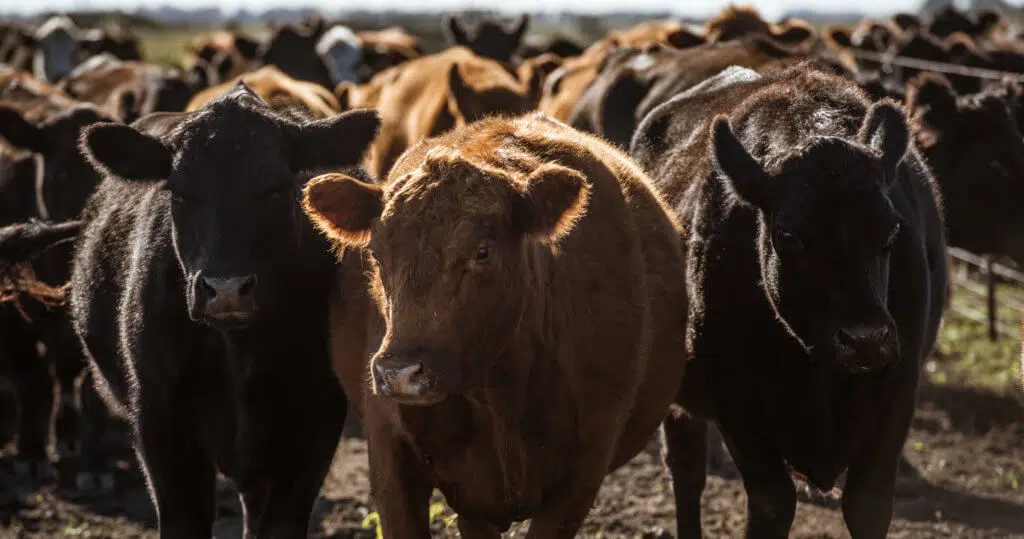When it comes to bovine respiratory disease (BRD) in the feedlot, the old aphorism, “An ounce of prevention is worth a pound of cure” could not be more apropos. In fact, it would be even more true to say that preventing disease in the feedlot is not just “worth a pound of cure”, but is actually worth much more and is much more effective than any cure we can provide. The challenging truth is, when calves get BRD in the feedlot, there is a certain percentage of them that cannot be saved because the disease has progressed too far for too long in the lungs of the animal. Some animals will become chronic in that they never fully return to normal, healthy levels of intake and performance. Other animals will succumb to the pathogens and the sequelae from the pathogens and will die. However, the converse is equally true: calves that do not get BRD in the feedlot, do not need treatment and do not die of BRD!
The stress of relocation
Animals transitioning from their previous life on pasture in another geography are subjected to various degrees of physical and psychological and conditional stressors. A short list of these stressors includes: abrupt weaning, co-mingling with strange animals, transportation, heat, cold, dust, dehydration and undernutrition. It is difficult, or even impossible for feedlot operators to prevent calves from experiencing stressful conditions. Instead, the feedlot operator must strive to provide the most stress-free environment possible to ease the transition to the animals’ new home, and to allow and encourage re-establishment of a healthy immune system.
After exposure to these numerous stressful conditions, calves arriving at the feedlot are in dire need of three key elements: water, hay, and rest. Calves which may have been in transit for more than a few hours need to get a “re-boot” of their entire system. Although the calves are likely exhausted from their transition from pasture to the feedlot, to get a proper start, they need to eat and drink before they begin to rest.
1. Drink
An abundant, easily accessible supply of clean, fresh water is essential. If less aggressive calves cannot drink immediately, they will instead search out a place to lay down and will not drink again for several hours; this is not desirable. In addition to the automatic waterers already inside the pen, place a large circular water tank inside the pen along a fence line where calves will easily encounter it and where it can be easily refilled by caregivers. This tank can be removed two to three days after arrival.
2. Eat
Similarly, if calves have been in marketing channels for multiple days, it is conceivable they have not had adequate quantity or quality of feed. Good-quality hay is the desirable first feed source for a number of reasons:
- to encourage eating behaviour;
- to revitalise the rumen microbial population; and
- to stimulate rumination and saliva production.
Grass hay, for receiving calves, should contain <46% neutral detergent fibre (NDF) and <32% acid detergent fibre (ADF) and receiving hay should be left in the long-stemmed form and not ground. Long-stemmed hay will stimulate chewing behavior in the calves and increase rumination, which buffers rumen fermentation and counters the pH drop from acid end-products of fermentation. These acids are the key energy source for the calf, but the acids also need to be buffered by saliva to sustain a healthy fermentation and a healthy calf.
Just as in providing multiple water sources, it is important to make available multiple sources of high-quality, long-stemmed hay. Hay should be scattered loosely in the feed bunk, but it is also valuable to put a hay bale in a bale feeder within the pen, at least 5 m to 10 m away from the feed bunk. Timid calves may not compete for hay at the crowded feed bunk, but they will likely find an opening to feed at a bale feeder away from the more aggressive calves. A guideline is to make available one large hay bale per truckload of calves in the pen; have this hay available when the calves are unloaded off the truck. When the hay is gone, the bale feeder can be removed; this could take two hours to three days. The time it takes for calves to totally consume the free-choice hay is indicative of the level of stress the calves have previously endured and can be used to manage processing and feeding practices.
In addition to high-quality hay, between 1 kg and 2 kg per head of a highly fortified receiving ration should be delivered to the feed bunk, on top of the previously scattered free-choice, long-stemmed hay. Be very cautious with the amount of receiving feed calves are given; acidosis increases the high risk of BRD in the feedlot even more. Excessive grain intake and the subsequent ruminal acids produced can cause acute acidosis, which is immunosuppressive, increasing the risk of respiratory disease.
3. Sleep
Finally, after calves have had a chance to drink and to eat, make sure there is abundant space for calves to lay down in a clean, dry area. If pens are muddy, cover an area of the pen with chopped straw or another form of dry bedding. Often, due to sheer exhaustion, calves’ strongest desire is only to collapse and rest; however, it’s important for the caregivers to gently encourage the exhausted, dehydrated, hungry calves to move toward the water and hay sources before they lay down. In addition to encouraging eating and drinking, this is an opportunity for caregivers to acclimatise the calves to low-stress handling practices and to the caregivers themselves.
A healthy start
Once calves have drunk and eaten, and have found a comfortable place to lay down, they will begin to ruminate and the rumen microbial populations will flourish, initiating a healthy start to their stay in the feedlot.









